

Understanding How Long Does Pasta Take To Digest: A Comprehensive Guide
Pasta typically takes about 2 hours to digest in the human body. Digestion begins as soon as you start chewing and continues in the stomach and small intestine. The process breaks down the carbohydrates in pasta into simple sugars for the body to absorb and use as energy. Factors like the type of pasta, cooking method, and individual digestion speed can affect how long it takes to fully process pasta. Understanding how long does pasta take to digest can help optimize meal timing and promote better digestion.
How Long Does Pasta Take to Digest?
Do you ever wonder what happens to the delicious pasta you enjoy eating? Have you ever thought about how long it takes for your body to break down and digest all those yummy noodles? In this blog post, we will explore the fascinating journey of pasta through your digestive system and answer the age-old question: How long does pasta take to digest?
The Digestive Process Explained
Before we dive into the specifics of how long it takes to digest pasta, let’s first understand the basics of the digestive process. When you eat food, it goes on an exciting journey through your body to be broken down into nutrients that your body can use for energy and growth.
The digestive system is like a series of tubes and organs working together to process the food you eat. It starts in your mouth, where you chew your food into smaller pieces, mixing it with saliva that contains enzymes to begin breaking down carbohydrates. From there, the food travels down your esophagus and into your stomach, where it mixes with stomach acid and enzymes for further breakdown.
Breaking Down Pasta
Now, let’s focus on pasta specifically. Pasta is a type of carbohydrate-rich food made from wheat flour and water. When you eat pasta, your body starts the process of breaking it down almost immediately.
In the stomach, pasta is mixed with stomach acid and digestive enzymes that start breaking down the carbohydrates into smaller molecules. The process continues in the small intestine, where more enzymes work to further break down the pasta into glucose, which is then absorbed into the bloodstream to provide your body with energy.
Factors Affecting Digestion Time
Several factors can influence how long it takes for pasta to be fully digested by your body. One of the most significant factors is the type of pasta you eat. Whole wheat pasta, for example, contains more fiber than white pasta, which can slow down the digestion process.
The size of the pasta pieces you eat also plays a role. Larger pieces of pasta may take longer to break down compared to smaller pieces. Additionally, the presence of fat or protein in your meal can affect the overall digestion time.
Fiber Content
Fiber is an essential component of pasta that can impact digestion time. Fiber-rich foods take longer to digest because the body cannot break down fiber completely. This can help you feel full longer and can also slow down the absorption of glucose into the bloodstream.
Protein and Fat
Proteins and fats in your pasta dish can also affect how long it takes to digest. Protein and fat are more complex molecules that require additional time and energy to break down compared to carbohydrates. Including protein and fat in your pasta meal can slow down the digestion process.
Estimating Digestion Time
While the exact time it takes for pasta to digest can vary from person to person, a general estimate is that it takes about 6-8 hours for your body to fully digest a pasta meal. However, this timeframe can be influenced by factors such as your overall health, metabolism, and the specific ingredients in your pasta dish.
It’s essential to listen to your body and pay attention to how you feel after eating pasta. If you experience discomfort, bloating, or other digestive issues, it may be a sign that your body is taking longer to digest the pasta.
In conclusion, pasta, like any other food, takes time to digest in your body. The process of breaking down pasta into nutrients that your body can use is a fascinating journey that involves multiple organs and enzymes working together to extract energy from your meal.
Next time you sit down to enjoy a plate of pasta, remember that your body is hard at work digesting and utilizing those delicious noodles. Pay attention to how you feel after eating pasta, and make choices that support your digestive health. And now you know – it takes about 6-8 hours for pasta to fully digest in your body!
How long does it take for pasta to be digested in your stomach?
Frequently Asked Questions
How does the digestion process of pasta work in the body?
When you consume pasta, the process of digestion begins in the mouth, where enzymes in saliva start breaking down the carbohydrates. As pasta moves to the stomach, it gets mixed with gastric juices that further break it down. The small intestine then absorbs the nutrients from the pasta, while the waste is passed to the colon for elimination.
What factors can influence the digestion time of pasta?
The time it takes for pasta to digest can vary depending on factors such as the type of pasta (whole grain, white), cooking method (al dente, well-cooked), individual metabolism, and what other foods are consumed along with the pasta. Fiber content and fat content in the pasta can also affect digestion time.
Is pasta typically considered a slow-digesting or fast-digesting food?
Pasta is generally considered a slow-digesting food due to its complex carbohydrate structure. The presence of fiber in whole wheat pasta can further slow down the digestion process. This slow digestion can help in providing a steady release of energy over a longer period, making pasta a good source of sustained energy.
Final Thoughts
Pasta typically takes around 4-6 hours to digest fully. Factors like type of pasta, cooking method, and individual metabolism can affect digestion time. In general, pasta is a good source of carbohydrates and provides sustained energy. Understanding how long pasta takes to digest can help in planning meals for optimal energy levels throughout the day.
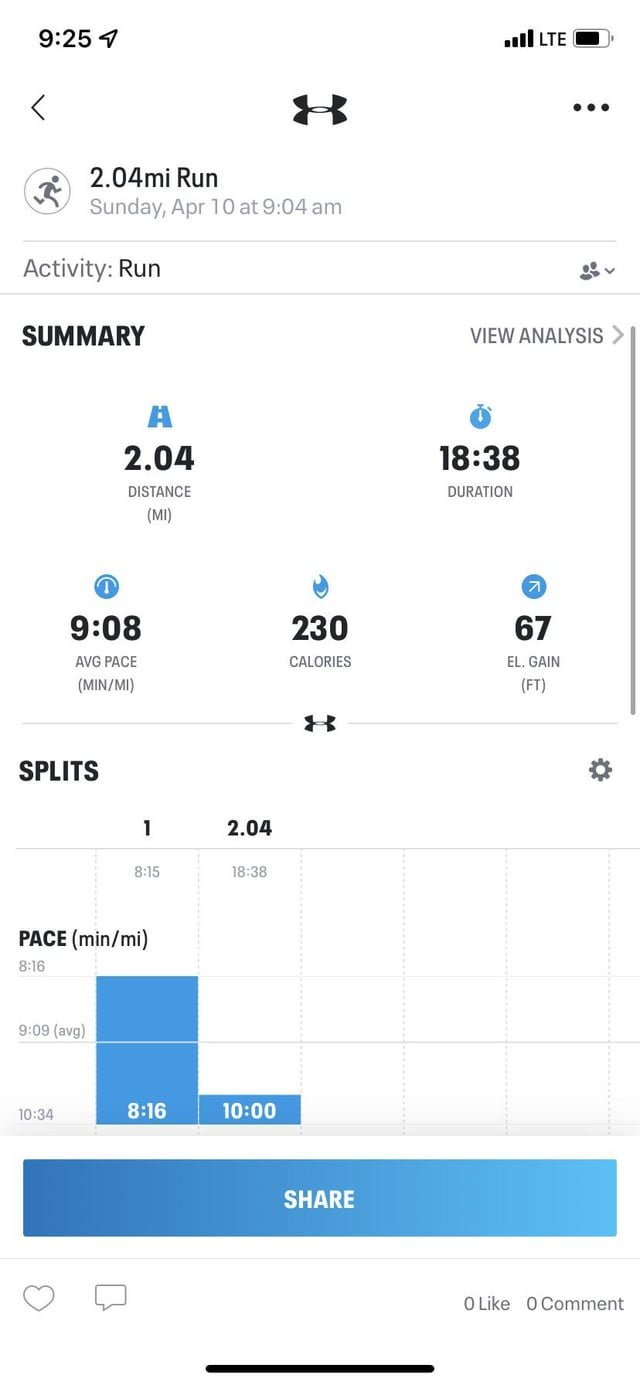
How Many Miles Do You Run In Cross Country: A Complete Guide
Cross country running distances vary, typically ranging from 3 to 6.2 miles per race. The question “how many miles do you run in cross country” often arises for beginners and seasoned runners alike. Understanding the distances involved is crucial for setting goals and preparing effectively. Let’s delve into the world of cross country running distances to uncover the challenges and exhilaration that come with each mile.
How Many Miles Do You Run in Cross Country
Welcome, young runners, to our guide on how many miles you typically run in cross country races! Whether you are just starting out or a seasoned cross country enthusiast, understanding the distances involved in this challenging sport is crucial. Let’s dive in to explore the various mileages you can expect to conquer on those picturesque cross country trails.
The Standard Distances
In cross country races, the distances can vary depending on the age group and level of competition. However, there are standard distances that are commonly used in cross country events. The most typical distances you will encounter are the 5k (kilometer) races for high school and college levels. A 5k race equates to approximately 3.1 miles. This distance is a perfect balance of challenge and achievability, making it a popular choice for cross country competitions.
For Beginners: 1-2 Mile Races
If you are just starting your cross country journey, you might begin with shorter races ranging from 1 to 2 miles. These distances are great for beginners to build up their endurance and get a feel for racing without overwhelming themselves with a longer course. As you progress and gain confidence, you can gradually increase the distance you run.
Regional and National Competitions
For more advanced runners or those competing at the regional or national level, you may encounter longer distances such as 8k (approximately 4.97 miles) or even 10k (approximately 6.2 miles) races. These longer courses require a higher level of endurance and training but can be incredibly rewarding for those who are up for the challenge.
Factors Affecting Race Distances
Several factors can influence the distances of cross country races. These factors are essential to consider as they can impact the level of difficulty and the strategies you may need to employ when running. Let’s take a look at some of these influencing factors:
Terrain and Course Layout
The terrain of the cross country course plays a significant role in determining the race distance. Courses that feature hilly terrain or challenging obstacles may have shorter distances to account for the increased difficulty. On the other hand, flat and smooth courses may have longer distances to provide a different kind of challenge to the runners.
Age Group and Skill Level
The age group and skill level of the participants can also affect the race distances. Younger age groups or beginners may have shorter race distances to ensure a positive and enjoyable experience. As runners progress to higher age groups or skill levels, the distances may increase to match the athletes’ abilities and provide a competitive and challenging environment.
Weather Conditions
Weather conditions, such as extreme heat or cold, can impact race distances to ensure the safety and well-being of the participants. In adverse weather conditions, race organizers may opt for shorter distances to prevent runners from experiencing dehydration, heat exhaustion, or other weather-related health issues.
Training for Different Distances
Preparing for cross country races requires specific training tailored to the race distance you will be running. Whether you are training for a 1-mile race or a 10k competition, focusing on the following aspects can help you improve your performance and achieve your running goals:
Endurance Training
Building endurance is crucial for conquering longer race distances. Include long runs in your training routine to gradually increase your stamina and ability to sustain your pace over the entire distance. Start with shorter distances and progressively extend the length of your runs as you build endurance.
Speed Workouts
Speed workouts are essential for improving your pace and overall race performance. Incorporate interval training, tempo runs, and hill repeats into your training plan to enhance your speed and running economy. By challenging yourself with different speed workouts, you can become a faster and more efficient runner.
Course-Specific Training
When preparing for a specific cross country course, consider tailoring your training to mimic the course’s terrain and challenges. If you know the course features hills, practice hill running in your training sessions. By familiarizing yourself with the course conditions, you can develop a strategic approach to tackle the race effectively.
As a cross country runner, understanding the distances involved in races is essential for your training and race-day strategies. Whether you are tackling a 5k course or gearing up for a longer 10k race, each distance presents its own set of challenges and rewards. By following a structured training plan, focusing on endurance and speed, and adapting your training to match the race distance, you can prepare yourself for success on the cross country trails. So lace up your running shoes, embrace the miles ahead, and enjoy the exhilarating journey of cross country running!
Remember, the key to success lies in consistent training, determination, and a positive attitude. Happy running!
3 Things I Wish I Knew Before Running Cross Country
Frequently Asked Questions
How long is a typical cross country race?
Most high school cross country races are typically 5 kilometers or approximately 3.1 miles. However, the distance can vary depending on the level of competition and the specific race course.
Is cross country running measured in miles or kilometers?
Cross country races are generally measured in kilometers, with the most common distance being 5 kilometers. This is equivalent to approximately 3.1 miles.
Do cross country races have different distances for male and female runners?
In most cases, both male and female cross country runners compete in races of the same distance. The standard distance for high school and college cross country races is typically 5 kilometers for both genders.
Final Thoughts
In conclusion, the mileage in cross country varies depending on the course and level of competition. Typically, high school cross country races cover 3.1 to 6.2 miles, while college and professional races span longer distances. The question of “how many miles do you run in cross country” is essential for training and preparation, as runners need to build stamina and endurance to tackle the distances. It’s crucial to set specific goals and tailor training plans accordingly for optimal performance.

Ultimate Guide: How To Use Pickling Spice Like A Pro
To use pickling spice effectively, you need to understand its aromatic blend of flavors and how it can elevate your pickling creations. The vibrant combination of ingredients like mustard seeds, peppercorns, and bay leaves adds depth and complexity to your pickled vegetables and fruits. Simply tie the pickling spice in a cheesecloth or use a spice bag for easy removal after the pickling process. Experiment with different ratios to personalize the taste profile according to your preferences. Let’s delve into the world of pickling spice and unlock its culinary wonders.
How to Use Pickling Spice: A Beginner’s Guide
Welcome to our guide on how to use pickling spice! Pickling spice is a versatile blend of herbs and spices that adds flavor and depth to your homemade pickles, relishes, and more. In this comprehensive article, we will walk you through everything you need to know about pickling spice, from its ingredients to different ways to use it in your recipes. Let’s dive in!
What is Pickling Spice?
Before we delve into how to use pickling spice, let’s first understand what it actually is. Pickling spice is a mixture of various whole and ground spices commonly used in pickling recipes to add flavor and complexity. While different recipes may vary, typical ingredients found in pickling spice include:
- Cloves
- Peppercorns
- Mustard seeds
- Bay leaves
- Cinnamon sticks
- Dried chili peppers
- Coriander seeds
How to Use Pickling Spice in Pickles
One of the most popular ways to use pickling spice is in homemade pickles. Whether you’re making dill pickles, bread and butter pickles, or pickled vegetables, pickling spice can elevate the flavors of your preserved goods. Here’s a simple guide on how to use pickling spice in your pickle recipe:
- Start by preparing your pickling brine according to your recipe.
- Place the pickling spice in a muslin bag or cheesecloth sachet to infuse the flavors without leaving residue in your pickles.
- Add the pickling spice sachet to the brine mixture and bring it to a simmer.
- Let the brine simmer for a few minutes to allow the flavors of the pickling spice to infuse into the liquid.
- Remove the pickling spice sachet before pouring the brine over your prepared vegetables.
- Proceed with the pickling process as per your recipe instructions.
Using Pickling Spice in Relishes and Chutneys
Aside from pickles, pickling spice can also be used in relishes, chutneys, and other condiments to add a depth of flavor. Here’s how you can incorporate pickling spice into your relish or chutney recipe:
- Prepare your relish or chutney base according to the recipe.
- Add a teaspoon or two of pickling spice to the mixture, depending on your taste preferences.
- Simmer the relish or chutney with the pickling spice to allow the flavors to meld together.
- Adjust the seasoning with salt and sugar, if needed, to balance out the flavors.
- Let the relish or chutney cool before storing it in jars for future use.
Experimenting with Pickling Spice Blends
While traditional pickling spice blends are widely available, feel free to experiment with creating your own unique blend based on your flavor preferences. You can customize your pickling spice blend by adjusting the quantities of each spice or adding in other herbs and spices like:
- Juniper berries
- Allspice berries
- Ginger
- Cardamom pods
- Fennel seeds
Remember to taste and adjust your pickling spice blend as you go to ensure it suits your palate. The beauty of pickling spice is that it allows you to get creative in the kitchen and tailor your flavors to your liking!
Now that you’ve learned how to use pickling spice in your recipes, it’s time to get pickling! Whether you’re a seasoned home cook or just starting out, pickling spice is a versatile ingredient that can take your homemade pickles and condiments to the next level. Don’t be afraid to experiment with different combinations and have fun exploring the world of pickling!
We hope this guide has been helpful in demystifying pickling spice and providing you with the confidence to incorporate it into your culinary creations. Happy pickling!
Easy Homemade Pickling Spice Mix (Ready in 5 Minutes!)
Frequently Asked Questions
How can I use pickling spice in my recipes?
To use pickling spice, simply add the desired amount to your pickling liquid for flavoring. You can also tie the pickling spice in a cheesecloth or use a spice bag for easy removal after the pickling process is complete.
What types of dishes can I enhance with pickling spice?
Pickling spice works well with a variety of dishes, including pickles, sauerkraut, corned beef, and other pickled vegetables. It can also be used to season brines for meats and poultry.
How much pickling spice should I use in my recipe?
The amount of pickling spice to use depends on your personal preference and the recipe you are following. A common guideline is to use approximately 1-2 tablespoons of pickling spice per quart of pickling liquid, but you can adjust the quantity based on your taste preferences.
Can pickling spice be used in other cooking methods besides pickling?
Yes, pickling spice can also be used as a seasoning blend for various dishes. You can use it to flavor soups, stews, marinades, and even homemade spice blends for meats and vegetables.
Final Thoughts
In conclusion, pickling spice is a versatile blend of herbs and spices that can elevate the flavor of your pickled creations. To use pickling spice, simply add a tablespoon or two to your pickling liquid along with your favorite vegetables or fruits. Experiment with different combinations to find your preferred flavor profile. Enjoy the delicious tangy and aromatic results of using pickling spice in your pickling adventures.
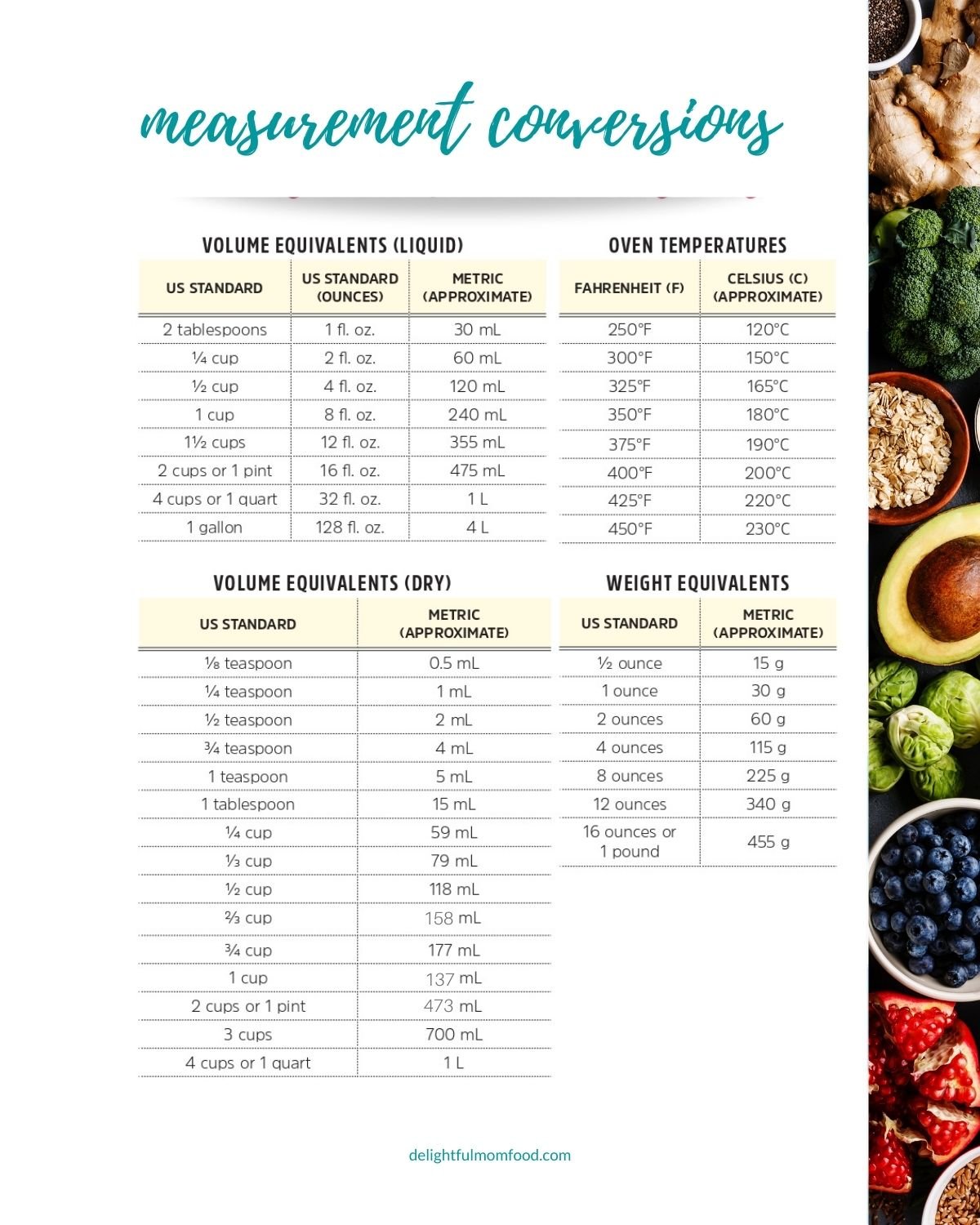
How Many Cups In A Liter: A Simple Guide
There are roughly 4.2 cups in a liter. Understanding this conversion can be quite handy, whether you are following a recipe or need to accurately measure liquid ingredients. Many home cooks and bakers often find themselves in a situation where they need to switch between cups and liters. Knowing how to do this conversion easily can save you time and ensure your dishes turn out just right. Join us as we delve deeper into the simple yet crucial question: How much cups in a liter? Let’s explore this measurement conversion and its practical applications together.
How Much Cups in a Liter: Exploring the Conversion
Have you ever found yourself in the kitchen, following a recipe that calls for a specific amount of liters, but you only have measuring cups on hand? Understanding how much cups are in a liter can be a lifesaver when cooking or baking. In this article, we’ll dive deep into the conversion of liters to cups, providing you with all the information you need to nail your recipes every time!
The Basics: Understanding Liters and Cups
Before we delve into the conversion, let’s make sure we’re all on the same page about what liters and cups are. A liter is a unit of measurement in the metric system used to measure volume. On the other hand, a cup is a unit of measurement commonly used in cooking and baking to measure both liquid and dry ingredients.
When it comes to conversions, it’s essential to know that 1 liter is equivalent to approximately 4.2 cups. This means that if a recipe calls for 1 liter of a liquid ingredient, you can use around 4.2 cups to measure it out.
Converting Liters to Cups
Now that we have a basic understanding of liters and cups, let’s explore how we can convert between the two. Converting liters to cups involves a simple multiplication. As mentioned earlier, 1 liter is equal to about 4.2 cups. To convert a certain number of liters to cups, you can use the following formula:
Number of Cups = Number of Liters x 4.2
For example, if you have 2 liters of milk and you want to know how many cups that is, you would multiply 2 by 4.2:
2 liters x 4.2 = 8.4 cups
So, 2 liters of milk is approximately equal to 8.4 cups.
Practical Application: Cooking and Baking
Understanding the conversion from liters to cups can be incredibly useful in the kitchen. Whether you’re making a big batch of soup, mixing up a refreshing beverage, or baking a delicious cake, knowing how much cups are in a liter can help you follow recipes accurately.
Let’s look at a common scenario: you’re preparing a fruit punch that calls for 3 liters of various juices. To measure out the liquids accurately, you can use the conversion we discussed earlier. By multiplying 3 liters by 4.2, you’ll find that you need approximately 12.6 cups of juice to make the perfect batch of fruit punch.
Quick Tips for Converting Liters to Cups
Converting liters to cups doesn’t have to be complicated. Here are some quick tips to help you make conversions with ease:
1. Know the Conversion Factor:
Remember that 1 liter is roughly equal to 4.2 cups. Having this conversion factor in mind can simplify your calculations.
2. Use a Measuring Cup:
When converting liters to cups, make sure to use a reliable measuring cup to ensure accuracy in your cooking and baking.
3. Double-Check Your Math:
It’s always a good idea to double-check your calculations when converting measurements. A small mistake could alter the outcome of your dish.
Understanding how much cups are in a liter is a valuable skill for anyone who loves spending time in the kitchen. By mastering this conversion, you can confidently tackle a wide range of recipes and create delicious dishes with precision. Whether you’re a novice cook or a seasoned baker, knowing how to convert liters to cups will undoubtedly enhance your culinary adventures. So next time you come across a recipe that calls for liters, remember the simple conversion to cups and cook up a storm!
Happy cooking!
How many cups in a liter?
Frequently Asked Questions
How many cups are in a liter?
There are approximately 4.2 cups in a liter. This conversion may vary slightly depending on the standard cup size being used.
Can I convert liters to cups accurately for cooking and baking?
Yes, you can convert liters to cups for cooking and baking purposes. Understanding the conversion factor of 1 liter to about 4.2 cups will help you accurately measure ingredients.
Why is it important to know how many cups are in a liter?
Knowing how many cups are in a liter is crucial for following recipes accurately, especially when dealing with international or metric measurements. It helps maintain consistency in the quantities of ingredients used.
Final Thoughts
In conclusion, knowing how much cups are in a liter is essential for accurate measurements in the kitchen. With 4.22 cups in a liter, you can easily convert recipes and portion sizes. Understanding this conversion simplifies cooking and baking, ensuring precise results. Next time you’re in the kitchen, keep in mind the ratio of cups to liters for seamless meal preparation.
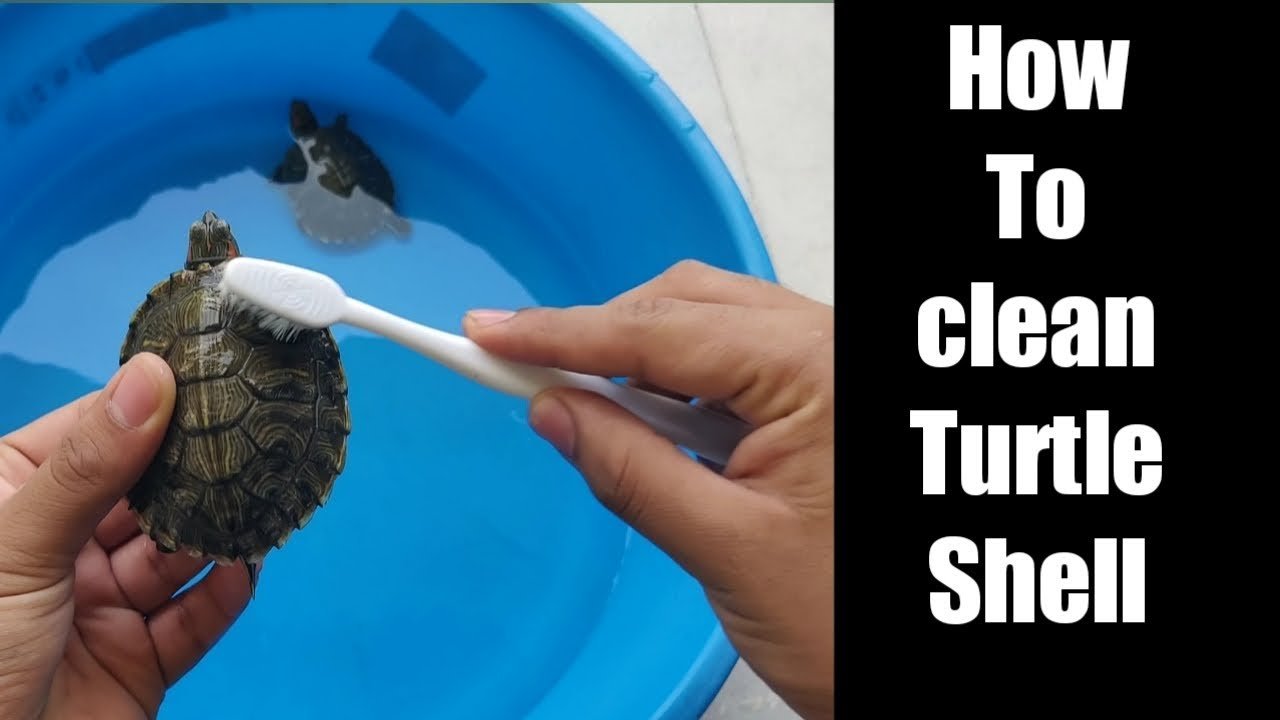
Simple Tips For Cleaning Turtle Shell: How To Clean Turtle Shell
To clean a turtle shell effectively, start by gently scrubbing it with a soft brush and mild soap. Rinse thoroughly with lukewarm water to remove any residue. Next, use a soft cloth to dry the shell completely to prevent any mold or mildew growth. Regular cleaning and maintenance can help maintain the beauty and health of your turtle’s shell for years to come. Now, let’s dive deeper into the step-by-step process of how to clean turtle shell to keep your shelled friend happy and healthy.
How to Clean a Turtle Shell
Introduction
Welcome to our comprehensive guide on how to clean a turtle shell! If you have a pet turtle or have found a turtle shell in the wild, it’s essential to know how to properly clean and preserve it. A turtle shell is a unique and fascinating part of these incredible creatures, and by learning the right techniques, you can ensure it remains in good condition for display or study.
Materials Needed
Before we dive into the cleaning process, let’s gather the necessary materials:
- Soft-bristled brush
- Mild dish soap
- Clean water
- Soft cloths
- Cotton swabs
- Optional: white vinegar
Step 1: Assess the Condition of the Turtle Shell
Before starting the cleaning process, carefully examine the turtle shell. Look for any cracks, loose scutes (the individual sections of the shell), or signs of damage. If the shell is severely damaged, it’s best to consult a professional rather than attempting to clean it yourself.
Step 2: Gently Remove Debris
Begin by using a soft-bristled brush to gently remove any dirt, dust, or debris from the turtle shell. Be very gentle to avoid causing any further damage to the shell. Brush in the direction of the scutes, following the natural pattern of the shell.
Step 3: Prepare the Cleaning Solution
Fill a bowl with clean water and add a small amount of mild dish soap. You can also add a teaspoon of white vinegar to help disinfect the shell if desired. Mix the solution gently to create a soapy mixture.
Step 4: Clean the Turtle Shell
Dip a soft cloth into the cleaning solution and wring out any excess liquid. Gently wipe the turtle shell with the damp cloth, focusing on one section at a time. Avoid getting the shell too wet, as excessive moisture can be harmful.
For hard-to-reach areas or intricate patterns on the shell, use a cotton swab dipped in the cleaning solution to carefully clean those areas.
Step 5: Rinse and Dry the Shell
Once you have cleaned the entire shell, rinse off any soap residue with clean water. Pat the shell dry with a soft cloth or allow it to air dry naturally. Avoid using heat to dry the shell, as this can damage the delicate keratin structure.
Step 6: Optional Preservation
If you wish to preserve the turtle shell for display, you can lightly apply a thin layer of mineral oil or turtle shell polish to enhance its natural shine and protect it from environmental damage. Remember to use these products sparingly and avoid any areas with visible damage.
Congratulations! You have successfully learned how to clean a turtle shell. By following these simple steps and using gentle techniques, you can maintain the beauty and integrity of the shell. Whether you’re a turtle enthusiast or a curious explorer, taking care of a turtle shell is a rewarding experience that allows you to appreciate the wonders of nature up close.
How to Easily Clean a Red Eared Slider's Turtle Shell | Tips
Frequently Asked Questions
How can I safely clean a turtle shell at home?
To clean a turtle shell at home, start by gently scrubbing it with a soft-bristled brush and lukewarm water. Avoid using harsh chemicals or rough scrubbing tools that can damage the shell. For stubborn dirt or algae, you can make a mild solution of water and vinegar to help loosen and remove the build-up. After cleaning, rinse the shell thoroughly with clean water and pat it dry with a soft cloth.
What should I do if my turtle’s shell has a foul odor?
If your turtle’s shell has a foul odor, it may be a sign of bacterial or fungal growth. In this case, it’s best to consult a veterinarian for proper diagnosis and treatment. Avoid attempting to mask the odor with perfumes or other products, as it’s essential to address the underlying cause to ensure your turtle’s health and well-being.
Is it necessary to sanitize the turtle shell after cleaning?
Sanitizing the turtle shell after cleaning is a good practice to prevent the growth of harmful bacteria. You can use a diluted solution of chlorine bleach or specialized reptile-safe disinfectants to sanitize the shell. Make sure to rinse the shell thoroughly after sanitizing to remove any residual cleaning agents that can be harmful to your turtle.
Final Thoughts
In conclusion, cleaning a turtle shell is essential for its overall health and well-being. To properly clean a turtle shell, start by gently scrubbing with a soft brush and warm, soapy water. Pay close attention to any algae or debris that may have accumulated. Rinse thoroughly to ensure all soap residue is removed. Remember, regular cleaning is crucial to maintain a healthy and happy turtle.

Simple Ways To Fix Wobbly Desk On Carpet
To fix a wobbly desk on carpet, start by firmly placing shims under the legs for stability. Ensure the shims are adjusted evenly to prevent wobbling. Alternatively, consider adding furniture pads or rubber grippers under the legs. These simple solutions can help create a solid foundation for your desk on carpet. Now, let’s delve deeper into the steps for a sturdy and steady workspace.
How to Fix a Wobbly Desk on Carpet
Are you tired of your desk wobbling every time you try to work or study? A wobbly desk can be frustrating and distracting, making it difficult to focus on your tasks. But fear not, as there are simple solutions to stabilize your desk on carpet without the need for professional help. In this comprehensive guide, we will explore various methods and tips on how to fix a wobbly desk on carpet, helping you create a stable and comfortable workspace.
Identifying the Cause of the Wobble
Before we dive into the solutions, it’s essential to determine the root cause of the wobble. A wobbly desk on carpet can be caused by uneven legs, an unstable base, or an uneven floor surface. By identifying the specific reason for the instability, you can choose the most suitable fix for your desk.
Adjusting the Desk Legs
One common reason for a wobbly desk is uneven legs. To address this issue, start by adjusting the height of each leg to ensure they are all in contact with the floor. Use a level to check the alignment of the legs and make necessary adjustments by turning the leg levelers clockwise or counterclockwise. This simple step can often eliminate the wobble caused by uneven legs.
Adding Shims or Spacers
If adjusting the legs doesn’t solve the wobble, you can try adding shims or spacers under the uneven legs. Cut pieces of cardboard, wood, or rubber pads to the desired thickness and place them under the shorter legs. This will help stabilize the desk and provide a level surface for your work area.
Using Furniture Pads or Floor Protectors
Another effective solution for fixing a wobbly desk on carpet is to use furniture pads or floor protectors. These adhesive pads can be attached to the bottom of the desk legs to create a cushioned barrier between the desk and the carpet. Not only will this help stabilize the desk, but it will also prevent damage to the carpet fibers.
Securing the Desk Base
If the wobble is originating from the desk base rather than the legs, you can secure the base to the floor for added stability. Use L-brackets or angle braces to attach the desk base to the wall or floor. This will prevent any side-to-side movement and keep the desk firmly in place on the carpet.
Reinforcing with Cross Bracing
For desks with a larger surface area or heavier weight, adding cross bracing underneath can help distribute the load and prevent wobbling. Install additional support beams or braces between the legs of the desk to reinforce the structure and minimize any sway or movement. This method is particularly effective for desks used for heavy-duty tasks.
Leveling the Carpet Surface
In some cases, the carpet itself may be uneven, causing the desk to wobble. To address this issue, consider leveling the carpet surface under the desk. You can use carpet padding or shims to create a more stable foundation for the desk legs. This simple adjustment can make a significant difference in the desk’s stability on carpet.
Regular Maintenance and Checks
Once you have fixed the wobble in your desk, it’s essential to perform regular maintenance checks to ensure it remains stable over time. Periodically inspect the desk legs, base, and overall structure for any signs of wear or loosening. By staying proactive and addressing any issues promptly, you can enjoy a sturdy and wobble-free workspace.
Dealing with a wobbly desk on carpet doesn’t have to be a daunting task. By following the simple yet effective solutions outlined in this guide, you can stabilize your desk and create a more comfortable work environment. Whether it’s adjusting the legs, adding shims, or securing the base, there are various methods to fix a wobbly desk without the need for professional assistance.
Remember, a stable desk not only enhances your productivity but also promotes better posture and overall well-being. So, roll up your sleeves, try out these tips, and say goodbye to that annoying wobble for good!
Happy stabilizing!
Top 3 Causes of Standing Desk Wobble and How You Can Avoid It
Frequently Asked Questions
How can I stabilize a wobbly desk on carpet?
To fix a wobbly desk on carpet, you can try using furniture pads or coasters underneath the desk legs. These pads can provide a stable surface for the desk to rest on, preventing it from wobbling. You can also consider using adjustable leveling feet that can be installed on the desk legs to ensure proper balance.
What other methods can I use to stop my desk from wobbling on carpet?
An alternative fix for a wobbly desk on carpet is to place shims or wedges under the uneven legs. By adjusting the height of the shims, you can level the desk and eliminate the wobbling. Additionally, tightening any loose screws or bolts in the desk frame can also help stabilize it on carpeted surfaces.
Are there any DIY solutions for stabilizing a wobbly desk on carpet?
Yes, you can try using a small piece of plywood or a thick book placed under the desk legs to create a level base. Another DIY solution is to attach self-adhesive rubber or felt pads to the bottom of the desk legs to improve grip on the carpet and reduce wobbling. These simple fixes can effectively stabilize your desk on a carpeted floor.
Final Thoughts
To fix a wobbly desk on carpet, start by adjusting the desk legs for stability. If needed, add shims or felt pads under the legs to level the desk. Alternatively, try using a rug gripper or double-sided tape to secure the desk in place on the carpet. By following these simple steps, you can easily resolve the issue of a wobbly desk on carpet, ensuring a sturdy and reliable workspace.

Decoding How Long Is Attorney Review In Nj
Attorney review in NJ typically lasts for 3 to 5 business days. It’s a crucial phase in the home buying process that allows for legal scrutiny of the contract. Understanding how long attorney review in NJ can take is essential for both buyers and sellers alike. During this time, attorneys review the terms of the contract, making sure their clients’ interests are protected. Delays in this stage can impact the overall timeline of the real estate transaction significantly.
How Long is Attorney Review in NJ: A Comprehensive Guide
Understanding Attorney Review in NJ
Attorney review in New Jersey is a crucial step in the process of buying or selling a home. It is a period during which the buyer and seller have the opportunity to consult with their attorneys and address any legal concerns before finalizing the real estate transaction. But how long does this review process typically take in the Garden State? Let’s delve into the details.
The Standard Timeframe for Attorney Review
In New Jersey, the standard timeframe for attorney review is typically three business days. During this period, the buyer’s and seller’s attorneys can review the contract, suggest modifications, and negotiate any necessary changes. It is essential for both parties to act promptly during this time to ensure a smooth and timely real estate transaction.
Factors Affecting the Length of Attorney Review
Several factors can influence how long attorney review takes in NJ. One significant factor is the responsiveness of the attorneys involved. If the attorneys promptly communicate and work efficiently, the review process can be completed within the standard three-day timeframe. However, delays in communication or decision-making can prolong the attorney review period.
Another factor that can impact the length of attorney review is the complexity of the real estate transaction. If there are complicated legal issues or unique contract terms that need to be addressed, the review process may take longer than the standard three days. It is crucial for both parties to be proactive in addressing any legal concerns to expedite the attorney review process.
Tips for a Smooth Attorney Review Process
To ensure a smooth attorney review process in NJ, follow these tips:
1. Choose Experienced Attorneys
Selecting attorneys with experience in real estate transactions can help streamline the attorney review process. Experienced attorneys are familiar with common issues that may arise during attorney review and can provide valuable guidance to their clients.
2. Communicate Effectively
Open and clear communication between all parties involved is key to a successful attorney review process. Make sure to promptly respond to your attorney’s requests and keep all parties informed of any developments or concerns.
3. Review the Contract Thoroughly
Carefully review the contract with your attorney and discuss any terms or conditions that may need clarification or modification. Addressing potential issues early on can help prevent delays during the attorney review period.
4. Act Promptly
Be proactive in addressing any legal concerns and making decisions during the attorney review period. Delays in communication or decision-making can prolong the review process and potentially jeopardize the real estate transaction.
In conclusion, attorney review in NJ typically lasts for three business days, but several factors can influence its length. By working with experienced attorneys, communicating effectively, and addressing legal concerns promptly, you can help ensure a smooth and timely attorney review process. Remember, attorney review is a crucial step in the real estate transaction process, so it is essential to approach it with diligence and attention to detail.
Explaining the Attorney Review Period in New Jersey
Frequently Asked Questions
How long does the attorney review typically take in New Jersey real estate transactions?
Attorney review in New Jersey usually lasts for 3 to 5 business days from the time all parties receive the contract signed by both the buyer and the seller. During this period, the attorneys can review the contract, suggest modifications, and negotiate terms, if necessary.
What happens if the attorney review period in New Jersey exceeds the standard time frame?
If the attorney review period in New Jersey surpasses the agreed-upon timeframe, it can lead to delays in finalizing the real estate transaction. Both parties should aim to adhere to the timeline to prevent any complications or extensions.
Can the attorney review period in New Jersey be shortened if needed?
Yes, the attorney review period in New Jersey can be expedited if both parties agree to it. However, it is crucial to ensure that all parties, including the attorneys, have ample time to review the contract thoroughly to avoid any potential legal issues down the line.
Final Thoughts
In conclusion, the attorney review process in New Jersey typically lasts for 3-5 business days. During this time, both the buyer’s and seller’s attorneys review and negotiate the terms of the contract. It is a crucial step in the real estate transaction that allows for legal protection and ensures all parties are in agreement. Understanding how long attorney review in NJ lasts will help you navigate the home buying process with confidence.

How Much Is Valet Parking At Burbank Airport: Essential Guide
Valet parking at Burbank Airport typically ranges from $23 to $30 per day. Convenience and peace of mind are just a few reasons travelers opt for this service. However, with numerous options available, finding the best valet parking deal is crucial. Let’s explore the cost, benefits, and tips for securing affordable valet parking at Burbank Airport.
How Much is Valet Parking at Burbank Airport?
Are you planning a trip and looking for a convenient parking option at Burbank Airport? Valet parking can be a stress-free and time-saving choice for travelers who want a seamless airport experience. In this detailed guide, we will explore everything you need to know about valet parking at Burbank Airport, including pricing, benefits, and how to make the most of this service.
The Convenience of Valet Parking
Imagine arriving at the airport and having a professional valet service take care of parking your car for you. With valet parking, you can skip the hassle of finding a parking spot, walking long distances with heavy luggage, and worrying about the security of your vehicle. Valet parking offers a convenient drop-off and pick-up service right at the airport terminal, making your travel experience more smooth and enjoyable.
Pricing Options for Valet Parking
The cost of valet parking at Burbank Airport can vary depending on several factors, such as the duration of your trip and any additional services you may require. Typically, the pricing for valet parking is calculated on a daily basis.
For short-term trips, the daily rate for valet parking at Burbank Airport ranges from $25 to $35. This rate may increase slightly during peak travel seasons or holidays. If you plan to leave your car parked for an extended period, such as a week or more, many valet parking services offer discounted weekly rates, which can save you money compared to the daily rate.
Benefits of Valet Parking
Apart from the convenience of drop-off and pick-up right at the terminal, valet parking offers additional benefits that make it a popular choice for many travelers. One of the primary advantages is the enhanced security features provided by valet parking services. When you opt for valet parking, your car is stored in a secure parking facility with 24/7 surveillance, giving you peace of mind while you are away.
Furthermore, valet parking often includes complimentary services such as assistance with luggage, shuttle service to and from the terminal, and sometimes even car wash and detailing options. These additional services can add value to your parking experience and leave you feeling well taken care of.
Booking Valet Parking in Advance
To ensure you have a spot reserved for valet parking at Burbank Airport, it is recommended to book in advance, especially during busy travel seasons. Many valet parking services allow you to make reservations online or over the phone, making the process quick and easy. By booking ahead of time, you can secure your parking spot, guarantee the availability of valet service, and sometimes even enjoy early booking discounts.
Tips for Making the Most of Valet Parking
To make the most of your valet parking experience at Burbank Airport, consider the following tips:
- Arrive at the airport with enough time to drop off your car and go through security without feeling rushed.
- Have all necessary travel documents easily accessible to avoid delays during drop-off or pick-up.
- Clearly communicate any specific instructions or preferences to the valet attendant to ensure a smooth experience.
- Take note of any contact information provided by the valet service in case you need to reach them during your trip.
- Upon your return, confirm the pick-up location and timing with the valet service to minimize wait times.
In Conclusion
Valet parking at Burbank Airport offers travelers a convenient and efficient parking option that can enhance the overall travel experience. While the pricing may vary based on the duration of your trip and additional services, the benefits of valet parking, including convenience, security, and added amenities, make it a popular choice for many passengers. By booking valet parking in advance and following some simple tips, you can make the most of this service and start your journey with peace of mind knowing your vehicle is in good hands.
Valet Parking Burbank
Frequently Asked Questions
What are the valet parking rates at Burbank Airport?
The valet parking rates at Burbank Airport vary depending on the duration of parking. Typically, the daily rate ranges from $25 to $45.
Can I make a reservation for valet parking at Burbank Airport?
Yes, you can make a reservation for valet parking at Burbank Airport. It is recommended to book in advance to secure your spot, especially during peak travel times.
Is valet parking at Burbank Airport a convenient option for travelers?
Yes, valet parking at Burbank Airport is a convenient option for travelers looking for a hassle-free parking experience. Your car will be parked and retrieved for you, allowing for a seamless transition to and from the airport terminal.
Final Thoughts
Valet parking at Burbank Airport costs around $25-$30 per day. This convenient service allows travelers to drop off their vehicle and have it parked for them. When considering the option of valet parking at Burbank Airport, the additional cost should be factored into your travel budget. Valet parking at Burbank Airport offers a stress-free experience for travelers looking for convenience and efficiency. Remember to inquire about the current rates for how much valet parking is at Burbank Airport before your trip.
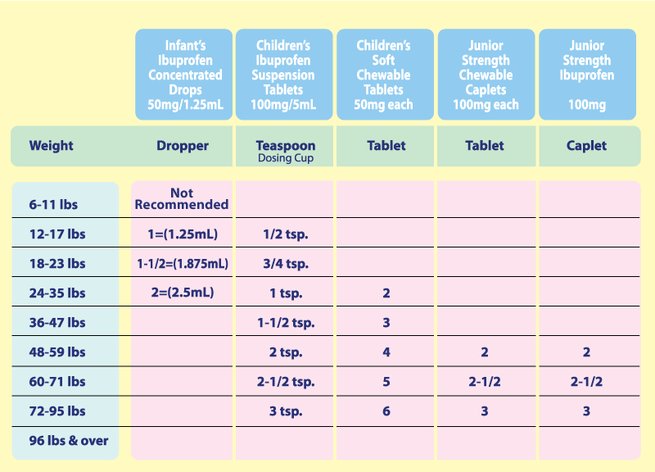
Best Practices: How Often To Give Tylenol And Motrin
Wondering how often to give Tylenol and Motrin to your little one? Finding the right balance between these two common over-the-counter medications can be crucial when dealing with children’s fevers or pain. Both Tylenol and Motrin can be effective in reducing fever and alleviating discomfort, but it’s essential to know the correct dosages and timing for each. Let’s explore the best practices for administering these medications to ensure your child’s well-being and comfort.
How Often to Give Tylenol and Motrin: A Parent’s Guide
Welcome, parents! If you’ve ever found yourself wondering about the best way to manage your child’s fever or pain, you’re in the right place. In this comprehensive guide, we’ll explore the importance of knowing how often to give Tylenol and Motrin to your little ones. Let’s dive in!
The Basics: Tylenol vs. Motrin
Before we delve into the dosing schedules, let’s differentiate between Tylenol (acetaminophen) and Motrin (ibuprofen). These are common over-the-counter medications used to reduce fever and relieve minor aches and pains. While both are effective in managing symptoms, it’s essential to understand when to use each one.
When to Use Tylenol:
Tylenol is typically recommended for reducing fever or relieving pain in children. It is gentle on the stomach and is suitable for kids who may have stomach sensitivity to other medications. Tylenol is also a go-to option for infants under six months old.
When to Use Motrin:
Motrin, on the other hand, is an NSAID (nonsteroidal anti-inflammatory drug) that can help reduce inflammation in addition to fever and pain. It’s ideal for older children and those with conditions like swelling or muscle pain. However, Motrin should not be given to infants under six months without a doctor’s approval.
Understanding Dosage Guidelines
When it comes to administering Tylenol or Motrin to your child, following the correct dosage guidelines is crucial. Giving too little may not provide adequate relief, while giving too much can be harmful. Always consult with your child’s pediatrician before starting any new medication regimen.
Dosing by Weight
Many medications are dosed based on a child’s weight rather than age. This ensures that the dosage is tailored to your child’s specific needs. Always use an updated weight and age chart to determine the correct dosage for your little one.
Timing Between Doses
One common question parents have is how often to give Tylenol and Motrin without overlapping doses. It’s crucial to space out the administration of these medications to avoid accidental overdosing. Typically, you should wait at least four hours between doses of Tylenol and six hours between doses of Motrin.
Creating a Dosage Schedule
Establishing a consistent dosing schedule can help you stay organized and ensure your child receives the right amount of medication at the right times. Here’s a simple guide to help you create a dosage schedule for Tylenol and Motrin:
Step 1: Consult Your Pediatrician
Before starting any new medication regimen, consult with your child’s pediatrician. They can provide personalized recommendations based on your child’s health history and current condition.
Step 2: Record Symptoms and Temperatures
Keep a log of your child’s symptoms and temperatures to track their progress. This information can help your pediatrician make informed decisions about dosage adjustments if necessary.
Step 3: Set Reminder Alarms
With busy schedules, it’s easy to forget when it’s time for the next dose. Set reminder alarms on your phone or use a medication tracking app to stay on top of the dosing schedule.
Step 4: Monitor Side Effects
While Tylenol and Motrin are generally safe when used as directed, it’s essential to watch for any potential side effects. Contact your pediatrician immediately if you notice any adverse reactions in your child.
As a parent, knowing how often to give Tylenol and Motrin to your child can be a game-changer in managing their fever and discomfort. By understanding the differences between the two medications, following proper dosing guidelines, and creating a dosage schedule, you can ensure your child receives the care they need.
Remember, your child’s health is a top priority, so never hesitate to reach out to your pediatrician with any questions or concerns. With the right knowledge and proactive approach, you can help your little one feel better in no time. Stay informed, stay vigilant, and most importantly, stay ready to handle whatever comes your way!
Where to Turn for Pain Relief or Inflammation (Aleve, Motrin, Advil, Tylenol) Dr. Mandell
Frequently Asked Questions
How should I alternate giving Tylenol and Motrin to my child?
When managing a child’s fever or pain with Tylenol (acetaminophen) and Motrin (ibuprofen), it’s important to follow the dosing instructions provided by your healthcare provider. Typically, you can alternate between the two medications every 3-4 hours, making sure not to exceed the maximum daily dose for each. Always double-check the correct dosage based on your child’s weight and age to avoid any potential complications.
What is the recommended frequency for administering Tylenol and Motrin to a child?
The frequency of giving Tylenol and Motrin to a child depends on the specific dosing instructions provided by your child’s healthcare provider. Generally, these medications can be given every 6-8 hours, but it’s crucial to consult with a healthcare professional to determine the appropriate timing for your child’s specific condition and age. Never exceed the recommended dosage or frequency without proper guidance.
Can I give Tylenol and Motrin simultaneously to my child?
It is not recommended to give Tylenol and Motrin simultaneously to a child unless advised by a healthcare provider. These medications work differently and have the potential to interact adversely when administered together. Alternating between Tylenol and Motrin at appropriate intervals is a safer and more effective approach to managing your child’s fever or pain.
Final Thoughts
It is important to administer Tylenol and Motrin as directed by the healthcare provider. Typically, Tylenol can be given every 4-6 hours and Motrin every 6-8 hours. Ensuring the correct dosage and frequency of these medications is crucial for effective pain or fever management. Always consult a healthcare professional for specific guidance on how often to give Tylenol and Motrin to avoid any potential risks or complications.
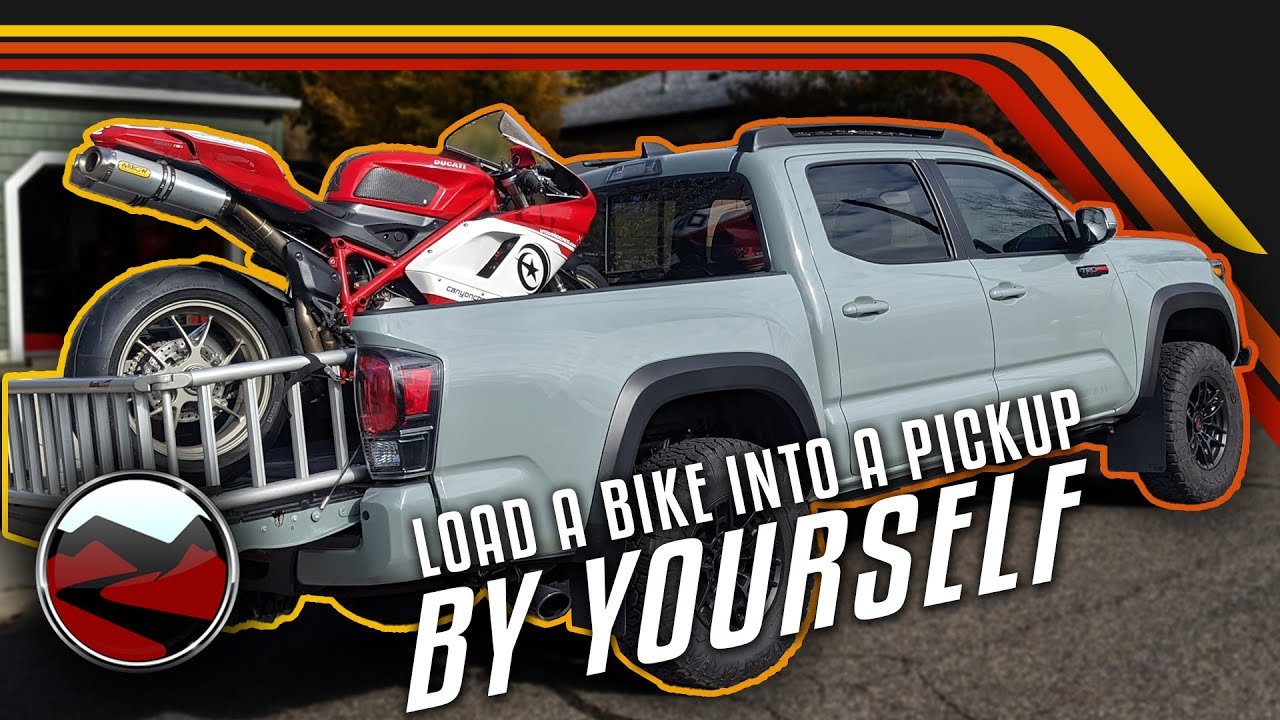
Efficient Guide: How To Load Motorcycle In Truck
To load a motorcycle in a truck safely and efficiently, follow these practical steps. Start by ensuring the truck bed is clear of any debris or obstacles. Next, use a sturdy loading ramp to guide the motorcycle into the truck. Once the motorcycle is in place, secure it properly with tie-down straps. Remember, knowing how to load a motorcycle in a truck is not just about convenience but also crucial for ensuring both the bike and the truck are kept safe during transportation.
How to Load a Motorcycle in a Truck
Transporting your motorcycle in a truck can be a convenient and efficient way to get your bike to a workshop, race track, or simply to take it along on a road trip. However, loading a motorcycle into a truck requires careful planning and execution to ensure the safety of your bike and those around you. In this comprehensive guide, we will walk you through the step-by-step process of loading a motorcycle in a truck like a pro!
Step 1: Prepare Your Truck and Loading Equipment
Before you begin loading your motorcycle, make sure your truck is parked on a level surface and that the loading ramp is securely attached to the truck bed. Check the tie-down straps and ensure they are in good condition and capable of securing your motorcycle during transit. It’s also a good idea to have a friend or family member assist you in loading the bike for added safety.
Step 2: Position the Truck and Ramp
Position your truck in a way that allows for a smooth and straight entry for your motorcycle onto the loading ramp. Make sure there are no obstacles or obstructions that could hinder the loading process. Extend the loading ramp fully and secure it in place to provide a stable platform for your bike.
Step 3: Prepare Your Motorcycle
Prior to loading your motorcycle, ensure that the bike is in neutral gear and that the handlebars are straight. If your bike has a center stand, engage it to provide additional stability during the loading process. Double-check the tire pressure and ensure that the brakes are functioning properly.
Step 4: Push or Ride the Motorcycle onto the Ramp
Depending on the weight of your motorcycle and your comfort level, you can either push the bike up the ramp or ride it up slowly and steadily. If you choose to ride the bike, make sure to maintain a steady speed and keep the bike centered on the ramp to prevent tipping.
Step 5: Secure the Motorcycle in the Truck
Once your motorcycle is in the truck bed, use high-quality tie-down straps to secure the bike in multiple locations. Attach the straps to solid anchor points on the truck bed to prevent the bike from shifting during transit. Make sure the straps are tight and secure, but not overly tight to avoid damaging the bike’s suspension.
Step 6: Check and Double-Check
Before hitting the road, double-check that all straps are securely fastened and that the motorcycle is stable in the truck bed. Test the bike by gently rocking it side-to-side to ensure it is properly secured. It’s also a good idea to check the tie-down straps periodically during your journey to ensure they remain tight and secure.
Additional Tips for Loading a Motorcycle in a Truck
Here are some additional tips to make the loading process smoother and safer:
Use a Loading Assistant:
Having a friend or family member assist you during the loading process can make it easier and safer, especially if you encounter any difficulties.
Practice Makes Perfect:
If you are new to loading a motorcycle in a truck, practice in a safe and controlled environment before attempting it on your own. This will help you gain confidence and ensure a smooth loading process.
Invest in Quality Tie-Down Straps:
High-quality tie-down straps are essential for securing your motorcycle during transit. Make sure to invest in straps that are designed for motorcycles and can withstand the weight and vibrations during travel.
Check Local Regulations:
Before transporting your motorcycle in a truck, make sure to check local regulations and requirements for securing the bike. Some areas may have specific guidelines for transporting motorcycles, so it’s important to comply with these regulations to avoid any issues.
By following these step-by-step instructions and tips, you can safely and effectively load your motorcycle in a truck and transport it to your desired destination with ease. Remember to always prioritize safety and take your time to ensure that your bike is securely fastened for a smooth journey!
Happy riding and safe travels!
How To Load a Motorcycle Into a Truck at RevZilla.com
Frequently Asked Questions
How can I safely load a motorcycle into a truck?
To safely load a motorcycle into a truck, start by ensuring the truck’s loading ramp is securely in place and at a suitable angle for the bike. Next, carefully push or ride the motorcycle up the ramp while applying the brakes gently. Use tie-down straps to secure the motorcycle in an upright position, making sure to fasten them to sturdy anchor points in the truck bed. Double-check all connections before driving off to ensure the motorcycle is stable during transportation.
What are the key steps to follow when loading a motorcycle into a truck alone?
If you are loading a motorcycle into a truck alone, consider using a ramp designed for motorcycle loading to make it easier. Before loading, ensure the truck is parked on a flat surface and the ramp is secure. You may need to use a combination of pushing and engine power to get the motorcycle up the ramp safely. Take your time, use caution, and consider employing a spotter to assist you if possible.
Are there any specific safety precautions to keep in mind while loading a motorcycle into a truck?
When loading a motorcycle into a truck, prioritize safety by wearing appropriate gear, such as gloves and sturdy footwear, to protect yourself during the process. It’s crucial to ensure the loading ramp is stable and secure before attempting to load the motorcycle. Always keep the motorcycle under control and avoid sudden movements that could lead to accidents or damage. Regularly inspect the tie-down straps and connections to confirm they are secure throughout the journey.
Final Thoughts
To load a motorcycle in a truck, follow these steps: secure the truck ramp, align the motorcycle with the ramp, and then carefully push or ride the motorcycle onto the truck bed. Use tie-down straps to secure the motorcycle in place and ensure it is stable during transport. Remember to double-check all connections before hitting the road. Loading a motorcycle in a truck requires attention to detail and careful execution to ensure a safe and successful transport.


